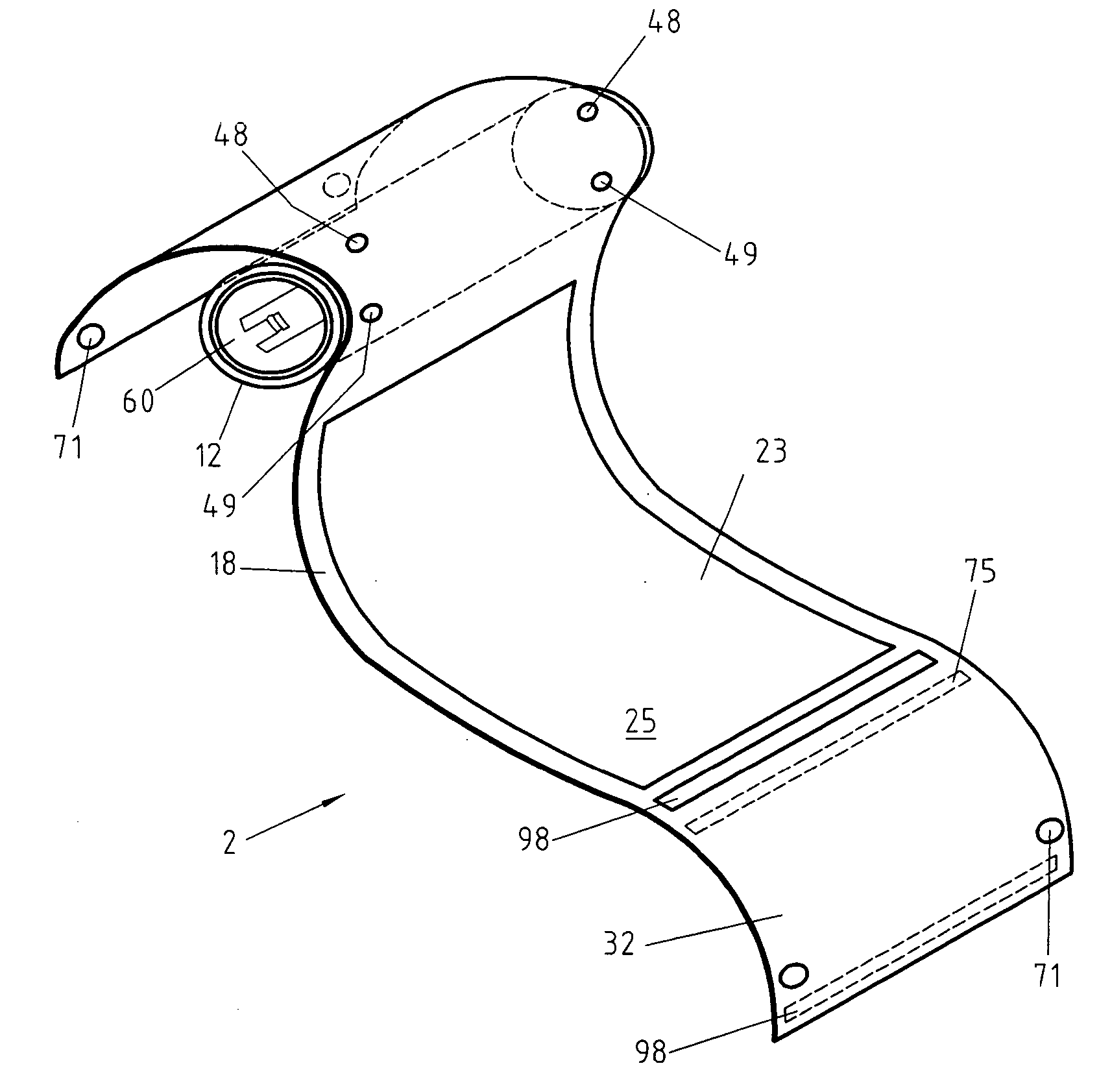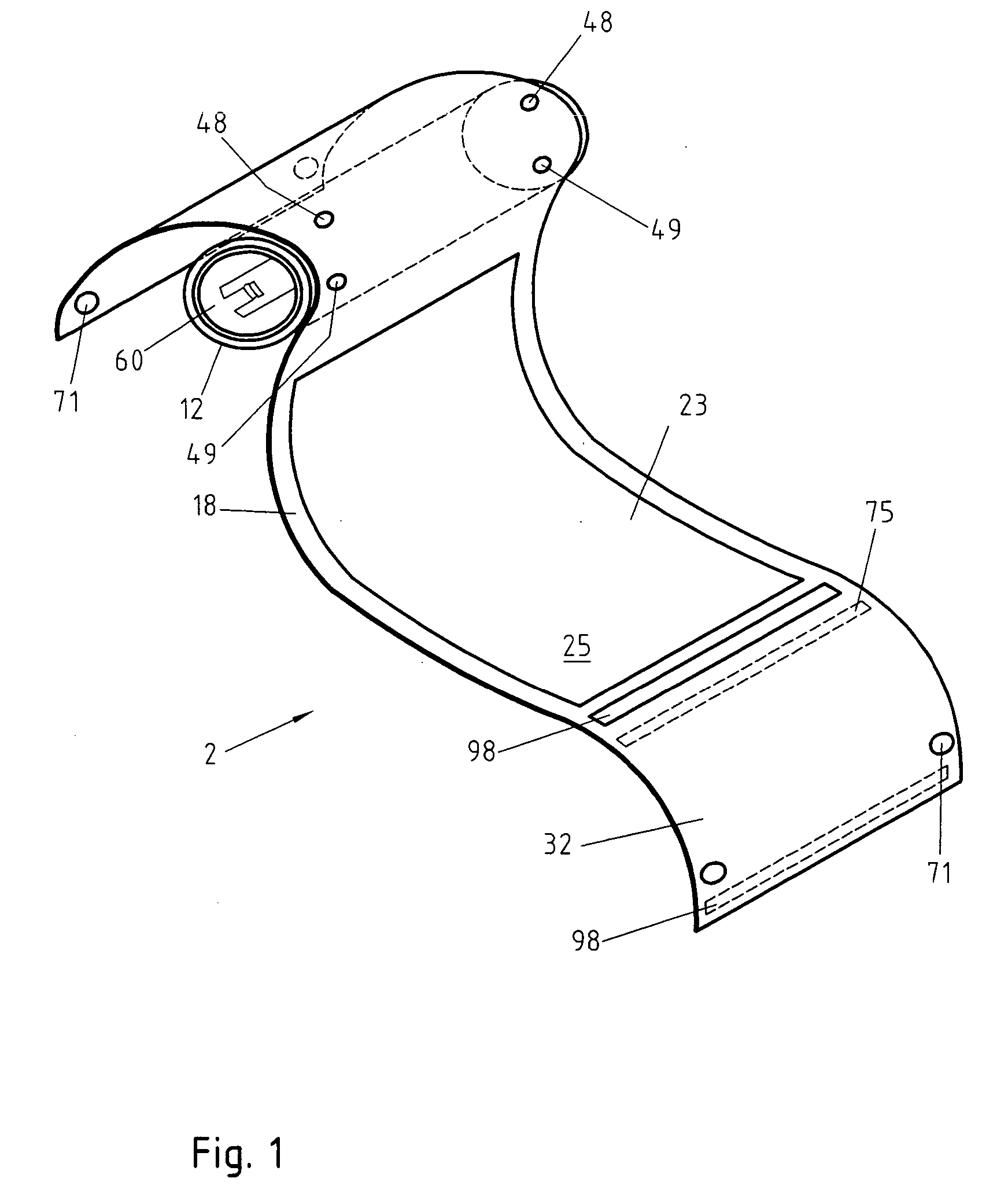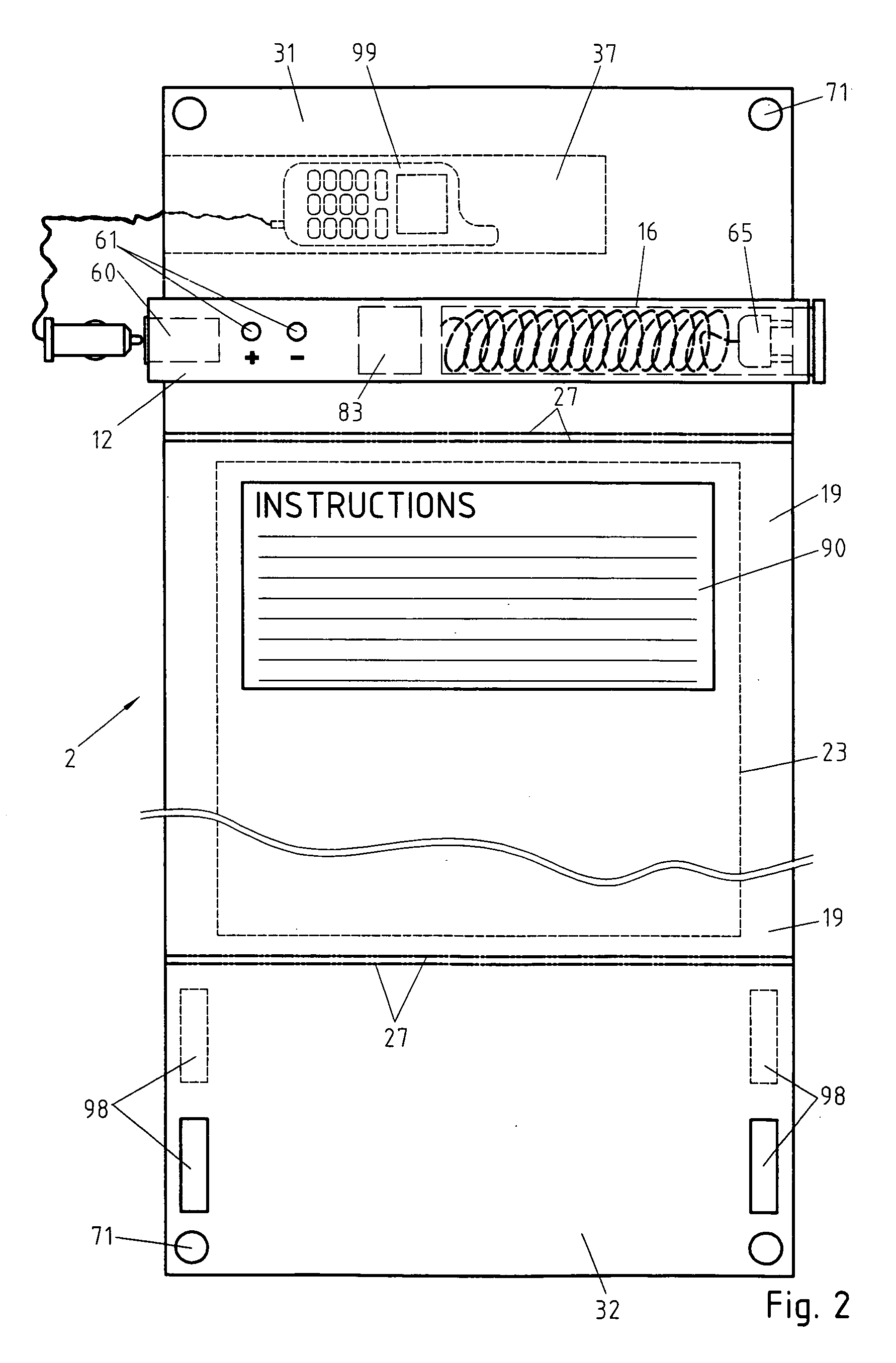Photovoltaic device
a photovoltaic device and solar panel technology, applied in the direction of photovoltaics, secondary cell charging/discharging, sustainable buildings, etc., can solve the problems of difficult to find a freely available ac connection, particularly inconvenient recharging procedure, and awkward for the traveller to equip himself or herself with adapters
- Summary
- Abstract
- Description
- Claims
- Application Information
AI Technical Summary
Problems solved by technology
Method used
Image
Examples
Embodiment Construction
[0024] The flexible solar charger represented on FIG. 1 represents an embodiment of the present invention. It comprises a flexible photovoltaic device 23 for the direct conversion of solar or artificial light into electric power. The flexible solar panel 23 is preferably made of flexible photovoltaic cells, such as for example amorphous silicon solar cells, cadmium telluride solar cells, copper indium diselenide solar cells or organic dye, deposited on a very thin and flexible substrate such as for instance a film of polyimide, polyethylene naphtalate. In a variant embodiment, the flexible solar panel 2 is made of conductive polymer layers. The present invention is not however limited to these examples, but rather comprises any other suitable material of combination of materials, including, for the substrate, thin metal sheets. In order to improve the solar panel's mechanical resistance and to protect the solar cells from damages, it is preferably further laminated in a thin transpa...
PUM
 Login to View More
Login to View More Abstract
Description
Claims
Application Information
 Login to View More
Login to View More - R&D
- Intellectual Property
- Life Sciences
- Materials
- Tech Scout
- Unparalleled Data Quality
- Higher Quality Content
- 60% Fewer Hallucinations
Browse by: Latest US Patents, China's latest patents, Technical Efficacy Thesaurus, Application Domain, Technology Topic, Popular Technical Reports.
© 2025 PatSnap. All rights reserved.Legal|Privacy policy|Modern Slavery Act Transparency Statement|Sitemap|About US| Contact US: help@patsnap.com



